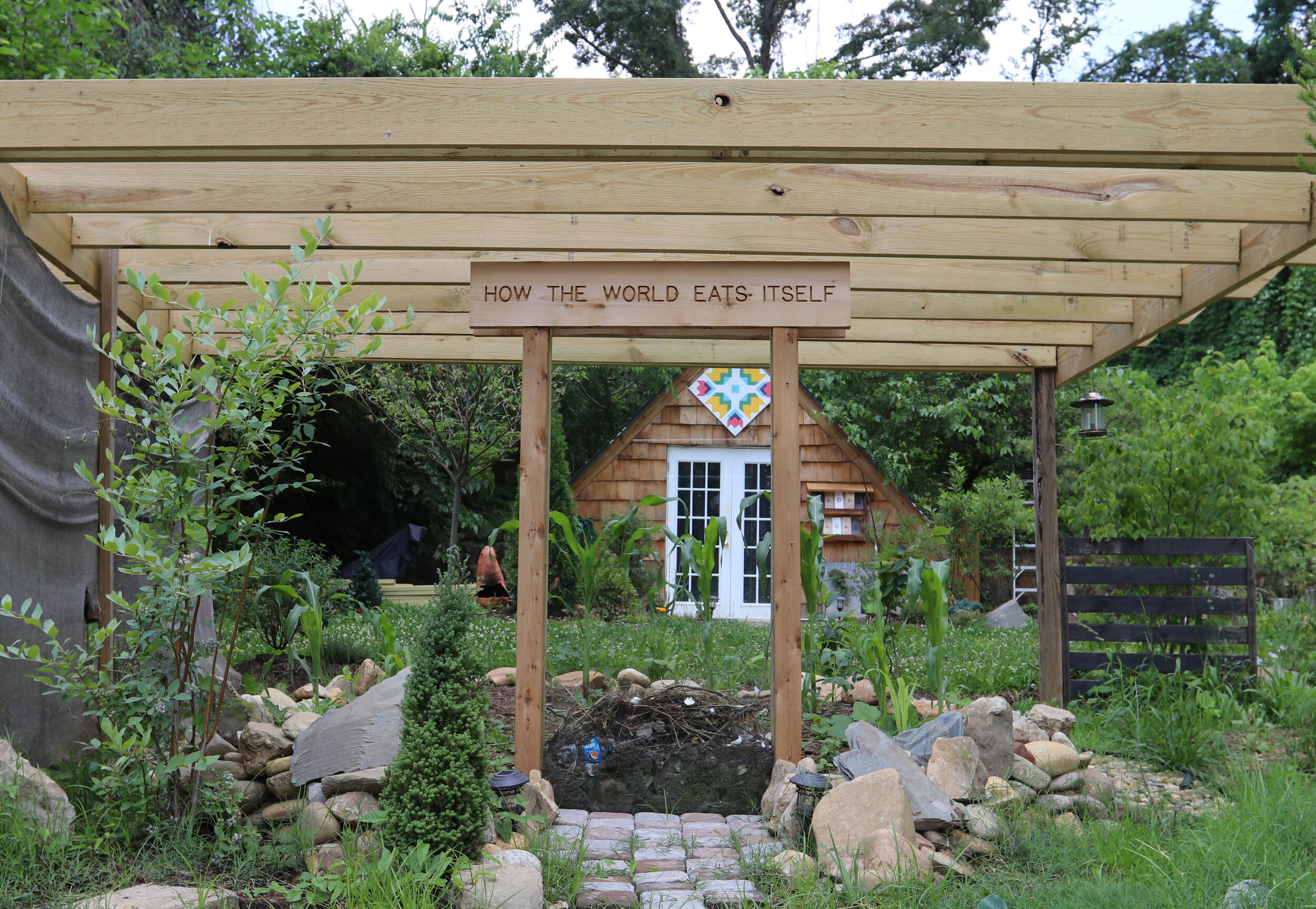HOW THE WORLD EATS ITSELF
The world we inhabit is a constant churning of digestion. A composting pile is a collection of tree limbs, grass, egg shells, banana peels, peach pits, rice dropped on the floor and old leaves that are, in time, being digested by the environment. “How The World Eats Itself” exhibition takes the form of a raised circular keyhole garden bed. A keyhole bed is a permaculture technique for growing where soil is mounded in a circle, and the very center of the bed is reserved for compost. This allows for the composted nutrients to slowly leech out into the garden bed, where it goes to feed the vegetables that in turn feed us.
For this exhibition, a sheet of glass creates a cross section of the composting pile so that we can watch how the world eats itself. Behind the glass, hungry aerobic bacteria, fungi, and a multitude of insects decompose this organic matter, leaving behind a rich fertilizer. All creatures eat to grow and when they are finished growing they themselves are eaten as a sacrifice to the future ecosystem. Teaching conservation is important in understanding the interdependent relationship of waste. There is no “away” when we throw things “away.”

